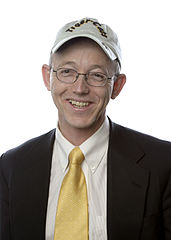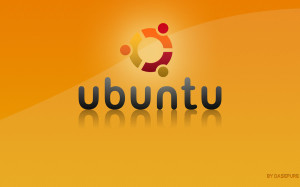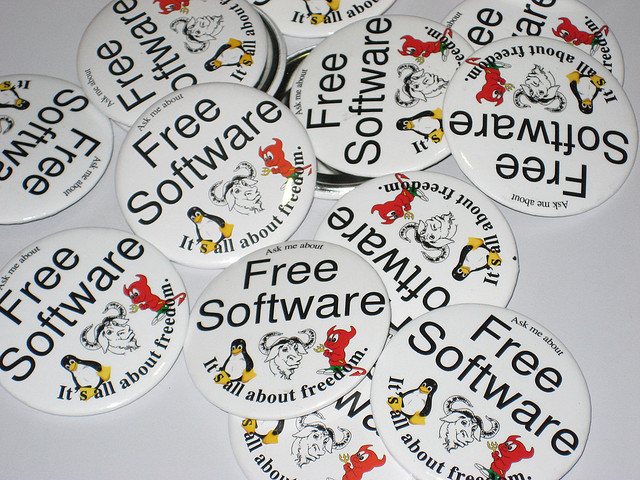It is said that hybrid economies will dominate the architecture for commerce on the Web. Hybrid economies build upon both the sharing and commercial economies, one that adds value to each. It will also radically change the way sharing economies function
Commercial economies build value with money at their core. Sharing economies build value, ignoring money. Both are critical to life both online and offline. Both will flourish more as Internet technology develops.
But between these two economies, there is an increasingly important third economy: one that builds upon both the sharing and commercial economies, one that adds value to each. This third type— the hybrid— will dominate the architecture for commerce on the Web. It will also radically change the way sharing economies function.
The hybrid is either a commercial entity that aims to leverage value from a sharing economy, or it is a sharing economy that builds a commercial entity to better support its sharing aims. Either way, the hybrid links two simpler, or purer, economies, and produces something from the link.
That link is sustained, however, only if the distinction between the two economies is preserved. If those within the sharing economy begin to think of themselves as tools of a commercial economy, they will be less willing to play. If those within a commercial economy begin to think of it as a sharing economy, that may reduce their focus on economic reward. Maintaining a conceptual separation is a key to sustaining the value of the hybrid. But how that separation is maintained cannot be answered in the abstract.
The Internet is the age of the hybrid. Every interesting Internet business is now, or is becoming, a hybrid. The reasons are not hard to see. As Yochai Benkler describes,
The Internet is the age of the hybrid. Every interesting Internet business is now, or is becoming, a hybrid. The reasons are not hard to see.
A billion people in advanced economies may have between two billion and six billion spare hours among them, every day. In order to harness these billions of hours, it would take the whole workforce of almost 340,000 workers employed by the entire motion picture and recording industries in the United States put together, assuming each worker worked forty- hour weeks without taking a single vacation, for between three and eight and a half years!
If sharing economies promise value, it is the commercial economy that is tuned to exploit that. But as those in the commercial economy are coming to see, you can’t leverage value from a sharing economy with a hostile buyout or a simple acquisition of assets. You have to keep those participating in the sharing economy happy, and for the reasons they were happy before. For here too money can’t buy you love, even if love could produce lots of money.
Yet there are differences among these hybrids. Here, I hope first to hide these differences enough to show a common pattern. I then focus on the differences in order to learn a bit more about how and why some hybrids succeed while others fail. As with Wikipedia among sharing economies, there is a paradigm here too. This is the theme upon which everything else is a variation. I start with this theme and then turn to the growing variations.
The Paradigm Case: Free Software
In the early 1990s, Robert Young was in the computer- leasing business. As a way to bring in customers, he wrote a newsletter called New York Unix. The newsletter covered whatever subjects his (potential) customers might be interested in. He was therefore keen to understand precisely what his customers would read. “I would ask all the members of the user groups, ‘What do you want to read about that isn’t already being covered in the major computer publications?’ The only thing they could think about at the time was free software.”

(Image: commons.wikimedia.org)
So Young decided to learn something about free software. He took a train to Boston to sit down with Richard Stallman to “ask him where this stuff was coming from.” Young was astounded by what he found. “[Stallman] was using lines [like] ‘from engineers according to their skill to engineers according to their need.’ ” “I’m a capitalist,” Young recalls thinking, “and the Berlin wall had just fallen. I thought, I’m not sure this model is going to keep going.” Young decided to forget about free software. “Given there was no economic support [for this] free software stuff,” Young believed it all “was a blip.” He reasoned, “It was only going to get worse over time as the communist system only ever got worse over time.”
Yet Young quickly saw that like many of the parallels that Marx saw, his own historical parallel didn’t quite work. The free software system didn’t get worse. “Over the course of the twenty four months that I was watching it, the stuff kept getting better. The kernel got better. More drivers came out for this stuff. More people were using it.”
This surprise prompted Young to talk with some key free software users to find out why the system was such a success. One of his research subjects was Dr. Thomas Sterling, who worked at the Goddard Space Flight Center,just outside of Washington, D.C. In his conversation with Sterling, Young first glimpsed the wide variety of reasons for the success of free software. One of Sterling’s employees, Don Becker, was writing Ethernet drivers that he licensed freely. Becker thought free software was “altruism” and thought himself part of the “altruism economy.” But Sterling had a different view. As Young recounted the conversation to me, “Sterling said, ‘Well, yeah, Don likes to think that way. But the reality is he’s writing these drivers on Goddard time, and I’m the one who’s writing his paycheck.’ ” In Sterling’s view, the story was simple: this was part of a barter economy. “He was giving away something of relatively small value, and receiving back something of much greater value.”
Free software came, he told me, not from a “community.” “As far as I’m concerned, there’s no such thing as a community. It’s simply a bunch of people with a common interest.”
Young’s a pragmatist. He’s skeptical of accounts that rely upon a mysterious spirit. Free software came, he told me, not from a “community.” “As far as I’m concerned, there’s no such thing as a community. It’s simply a bunch of people with a common interest.” That “bunch of people” represented the “full range of humanity.” But it had one thing in common: “a desire to see open- source software succeed.” And that desire led members of this “bunch” to accept the idea of a commercial entity leveraging this sharing economy.
As Young became convinced that free software wasn’t just a fad and, more important, that its success didn’t depend upon reviving Lenin, he began to look for a way to build a Linux business. “I was looking for a product because I knew that given the growth of interest in Linux, it was going to end up in CompUSA. . . . I didn’t want CompUSA as a competitor. I’d rather have them as a customer. So I was looking for products that I could get an exclusive on.”
Young found a young entrepreneur to partner with named Marc Ewing. Ewing had for a time been developing a software tool to run on Linux. But after months of frustrating development, he concluded that what the world really needed was a better version of Linux. He therefore started to build that better version, which he would eventually name Red Hat Linux. Young heard about Ewing’s software and contacted him. He offered to buy ninety days’ supply of his beta, about three hundred copies. “There was dead silence at the other end of the phone,” Young recounted to me.
“I finally got out of Marc that he was only thinking of manufacturing three hundred copies. It was a match made in heaven.” Red Hat Inc., was born, a paradigmatic example of what I call the hybrid.
Red Hat’s success, in Young’s view at least, came from something that seems so obvious in retrospect that it’s puzzling more didn’t try the same thing: that this free- software company actually made its software open- source. Other Linux distributions tried to mix open- source components with proprietary components. That was, for example, Caldera’s strategy. But Young understood that the only way Red Hat could compete with Microsoft or Sun Microsystems was by giving its customers something more than what Microsoft or Sun could give them— namely, complete access to the code.
Young saw this point early on. He described a conversation with some engineers from Southwestern Bell at a conference at Duke. Young was surprised to learn that they were using Linux to run the central switching station for Southwestern Bell. He asked why. Their response, as Young recounts it, is quite revealing:
Our problem is we have no choice. If we use Sun OS or NT and something goes wrong, we have to wait around for months for Sun or Microsoft to get around to fixing it for us. If we use Linux, we get to fix it ourselves if it’s truly urgent. And so we can fix it on our schedule, not the schedule of some arbitrary supplier.
The key was to sell “benefits” and not “features.” And here the benefit was a kind of access that no other dominant software company could provide. Red Hat is thus a “hybrid.” Young was not in it to make the world a better place, though knowing the man, I know he’s quite happy to make the world a better place. Young was in it for the money. But the only way Red Hat was going to succeed was if thousands continued to contribute— for free— to the development of the GNU/Linux operating system. He and his company were going to leverage value out of that system. But they would succeed only if those voluntarily contributing to the underlying code continued to contribute.
One might well imagine that when a for- profit company like Red Hat comes along and tries to leverage great value out of the free work of the free- software movement, some might raise “the justice question.”
One might well imagine that when a for- profit company like Red Hat comes along and tries to leverage great value out of the free work of the free- software movement, some might raise “the justice question.” Putting aside Marc Ewing (who had great coder cred), who was Robert Young to make money out of Linux? Why should the free- software coders continue to work for him (even if only indirectly, since anyone else was free to take the work as well)? What did the (in Young’s mind at least) proto- Marxist Stallman think about the exploitation of this work? “What about,” one might imagine the question being asked, “the worker coder?”
Yet what’s most interesting about this period in the early life of the hybrid is that there were bigger issues confronting the movement than whether a Canadian should be allowed to risk an investment on a Linux start- up. The bigger issue was a general recognition that free software would go nowhere unless companies began to support it. Thus, while there was whining on the sidelines, there was no campaign by the founders of key free software to stop these emerging hybrids. So long as the work was not turned proprietary— so long as the code remained “ ‘free’ in the sense of freedom”— neither Stallman nor Linus Torvalds was going to object. This was the only way to make sure an ecology of free software could be supported. It was an effective way to spread free software everywhere. And indeed, the freedom to make money using the code was as much a “freedom” as anything was. If there were people who objected strongly to this form of “exploitation,” then, as Apache cofounder Brian Behlendorf described to me, they “probably were disinclined from contributing to open source in the first place. They might have kept themselves out of the market and not spent their volunteer time or their hobbyist time writing code.”
And thus Red Hat (and then LinuxForce [1995], CodeWeavers [1996], TimeSys Corp. [1996], Linuxcare [1998], Mandriva [1998], LinuxOne [1998], Bluepoint Linux Software Corp. [1999], Progeny Linux Systems Inc. [1999], MontaVista Software [1999], Win4Lin [2000], Linspire [2001], and Xandros [2001], to name a few) was born. An ecology of commercial entities designed to leverage value out of a sharing economy. The birth of the most important Internet hybrids.
Now, as Red Hat demonstrates, there is a delicate balance to be struck between the commercial entity and the sharing economy. Red Hat succeeded in maintaining the loyalty of the community because of how it behaved. It respected the terms of the license; it supported development that others could build upon; indeed, as Young estimates, at one point more than 50 percent of the core kernel development team worked for Red Hat, and both Red Hat and VA Linux Systems gave stock options to Linus Torvalds. Many from the GNU/Linux community helped Red Hat understand what appropriate behavior was, and the company took great steps to make sure its behavior was appropriate. A key element to a successful hybrid is understanding the community and its norms. And the most successful in this class will be those that best leverage those norms by translating fidelity to the norms into hard work.
Perhaps the most interesting recent example of this model is a company called Canonical Ltd., a commercial entity supporting another brand of GNU/Linux called Ubuntu Linux. Launched in 2004 by the entrepreneur Mark Shuttleworth, Ubuntu aims to become “the most widely used Linux system.” Its focus initially has been really really easy desktop distributions. (I’ve experimented with a number of Linux installations. This one was by far the easiest.) The company hopes that the ease and quality of its distribution (not to mention its price) will drive many more individual computer users to use Ubuntu Linux.

Canonical aims to profit from the community- driven and community- developed Ubuntu. Its vision is inspired by Shuttleworth, who says he has been “fascinated by this phenomenon of collaboration around a common digital good with strong revision control.” That collaboration is done through a community. Canonical intends to “differentiate ourselves by having the best community. Being the easiest to work with, being the group where sensible things happen first and happen fastest.” “Community,” Shuttleworth said to me, “is the absolute essence of what we do.” “Thousands” now collaborate in the Canonical project. To make this collaboration work, as Shuttleworth describes, at least three things must be true about the community. First, you must give the community “respect.”
Second, you must give “responsibility”— actually give the community the authority you claim it has. “If you’re not willing to respect the fact that you’ve offered people the opportunity to get invested, and take a leadership position . . . there’s no way that’s going to grow a strong team.”
Third, and maybe ultimately the most important: you have to “give people a sense of being part of something that has meaning.” This the free- software community can give away easily. Contributors to this community “feel they’re being part of something that’s big and important and beautiful. . . . They feel like they get to focus on the things that they really want to focus on. And that’s satisfying.”
This is a common feature, Shuttleworth believes, across successful community- based projects. If you “look at Wikipedia,” for example, “people genuinely feel like they’re part of something: they’re helping to build a repository of human knowledge, and that’s an amazing thing. It’s a full spectrum of motivation, just like you get the full spectrum of motivation in free software.” Shuttleworth’s vision is different from Red Hat’s. Remember, Young didn’t believe in the “community” thing. Community is central to Ubuntu. But in this range of motivations, some tied to believing in something and some not, we can begin to get a sense of the interesting mix that the hybrid economy will produce. Diversity is its strength; it flourishes from the obscurity such diversity produces.
This article is an excerpt from the book “Remix: Making art and commerce thrive in the hybrid economy” written by Prof. Lawrence Lessig director of the Edmond J. Safra Center for Ethics at Harvard University and the Roy L. Furman Professor of Law at Harvard Law School.







